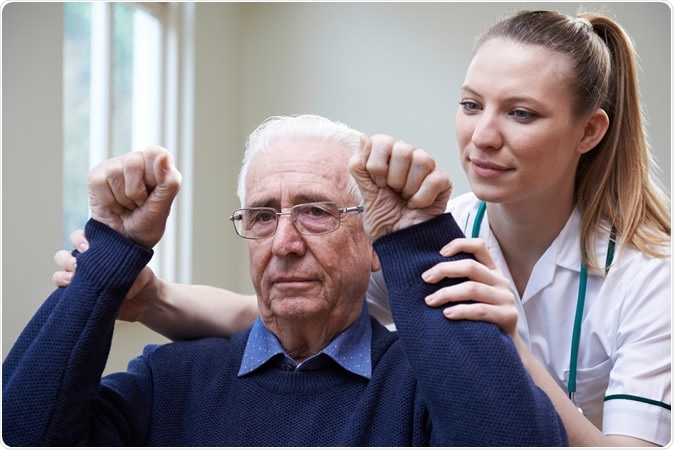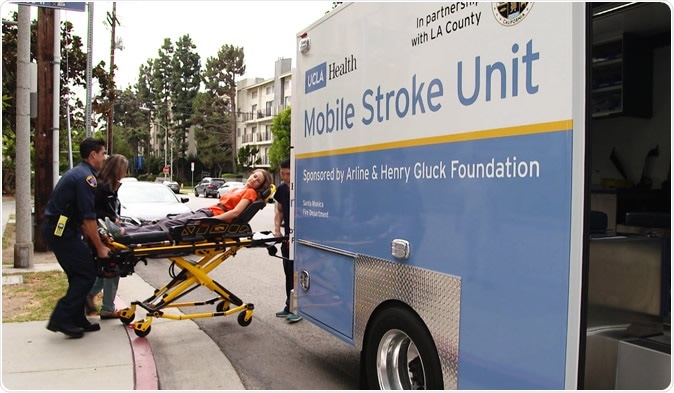Treating stroke 15 minutes faster significantly improves outcomes, a new study suggests.
A team of researchers at the David Geffen School of Medicine in the University of California, Los Angeles (UCLA) wanted to determine the association between time to treatment with Endovascular Reperfusion Therapy and outcomes in patients with acute ischemic stroke. They found that initiating treatment earlier and faster can save lives and prevent long-term disability.
Stroke or cerebrovascular accident (CVA) occurs when the blood supply to a part of the brain is blocked suddenly. In some cases, it happens when a brain blood vessel ruptures, spilling blood into the spaces surrounding the brain cells. Cardiovascular diseases, including stroke, is the number 1 cause of death worldwide.
In the United States, stroke is the third leading cause of death, with more than 140,000 people dying every year. It’s also the leading cause of severe and long-term disability. Hence, preventing the serious effects of a stroke is crucial.

Nurse assessing stroke victim by raising arms. Image Credit: SpeedKingz / Shutterstock
Stroke treatment
The treatment of stroke begins the moment emergency medical services (EMS) arrives at the scene to take the patient to the hospital. In the clinical setting, the patient will receive emergency care, treatment to prevent another stroke, and rehabilitation to reduce the effects of a stroke to the brain.
Endovascular-reperfusion therapy for large vessel occlusion in acute ischemic stroke (AIS) comprises several pharmacological and mechanical procedures. Randomized clinical trials have suggested the benefit of the procedure on patients with AIS. It’s time-dependent as it influences the outcome of the condition. It’s time-dependent but the extent to which it impacts prognosis and outcome to clinical practice remains uncertain.
Early and immediate treatment is crucial
In the study, which was published in JAMA Network, the researchers wanted to characterize the link between the speed of treatment and outcome among patients with acute ischemic stroke who are undergoing endovascular-reperfusion therapy.
The researchers analyzed data from 6,756 people who had ischemic strokes. The median age of the patients was 70 and more than half were women. To land to their findings, they noted at the patient’s treatment results taking into consideration the “door-to-puncture” time, which is described as the interval from the time they arrived at the hospital and the time the treatment started.
They found that for every 1,000 patients who had a door-to-puncture time of 15 minutes sooner or earlier, there were 15 fewer deaths or were admitted to hospice care. Also, 17 patients were able to walk out of the hospital without any assistance, and 22 patients were able to care for themselves after being discharged.
Moreover, the median or average time from arriving at a healthcare setting to the start of treatment was 1 hour, 27 minutes and the median time from the start of symptoms to treatment was about three hours, 50 minutes.
Further data shows that hospitals performing endovascular reperfusion therapy on more than 50 patients each year initiate treatment faster than those who perform less than 30 patients. Also, they found that treatment is delayed in hospitals without certifications, unlike stroke centers.
Patients who experience a stroked during the hospital off-hours, such as holidays, weekends, and before 7 a.m. and after 6 p.m. on weekdays, tend to receive delayed initial treatment. People who live alone or weren’t able to recognize the symptoms immediately tend to receive delayed treatment, too.
“We’re trying to improve treatment with better staffing on off-hours and getting doctors to the hospital quicker when they’re on call. Patients who arrive at the hospital at 2 a.m. should be treated no differently than people who arrive at 2 p.m.,” Dr. Reza Jahan, co-lead author and a professor of interventional neuroradiology at the Geffen School of Medicine, explained.
They concluded that treating the patient 15 minutes earlier could potentially improve results for patients and could save thousands of lives.
“Among patients with large vessel occlusion AIS treated in routine clinical practice, shorter time to endovascular-reperfusion therapy was significantly associated with better outcomes. These findings support efforts to reduce time to hospital and endovascular treatment in patients with stroke,” the authors added.

UCLA Health UCLA Health’s Mobile Stroke Unit brings the hospital to the patient so doctors can make a diagnosis quickly and start treatment as soon as possible.
What are the early signs and symptoms of a stroke?
During a stroke, every minute counts. It’s vital to spot the early signs and symptoms of stroke early on. The signs and symptoms of stroke include sudden weakness or numbness in the arm, face, or legs, which is one-sided, sudden vision loss in one or both eyes, sudden difficulty of speaking, problem with understanding speech, and sudden confusion, sudden severe headache with no known cause, and sudden motor problems like loss of balance and coordination and dizziness.
Journal reference:
Jahan R, Saver JL, Schwamm LH, et al. Association Between Time to Treatment With Endovascular Reperfusion Therapy and Outcomes in Patients With Acute Ischemic Stroke Treated in Clinical Practice. JAMA. 2019;322(3):252–263. doi:10.1001/jama.2019.8286, https://jamanetwork.com/journals/jama/fullarticle/2738288